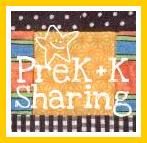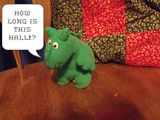Carrie saw my previous posts on making flannelboard pieces with milk filters, and would like information for purchasing these. I figured I would do a quick follow up post for anyone who would like to make flannelboard pieces from milk filters and was still having difficulty finding the filters!
If you missed the information on how to make these you can find it
HERE and
HERE.
You can purchase the milk filters directly through
Farm and Fleet on-line. I found that some of the stores may not carry them in stock or they may only have one size, so buying on-line is probably the easiest route.
Here is the link to buy the:
15 inch Ken-Ag milk filters These will need to be cut to the size of printer paper and fed through the printer just like paper. While
$13.49 may sound like a lot, one box of 100 should last quite a while! You can print multiple flannelboard pieces on one sheet of milk filter 'paper'.
I ended up experimenting with using the
6 1/2 inch Ken-Ag milk filters, which also can be purchased on-line. Simply tape the filter to the middle of a piece of computer paper and it will feed directly through the printer. These are
$3.99, but are a little more tricky to use for printing.
Of course, if you don't want to pay shipping charges and you live near a farming area, you may be able to simply go to a farm implement store and ask for these. Any area that has dairy farms should carry milk filters. I'm sure there are other brands. I just happened to use these since that is what the store near my house sold! I really am not sure if there are differences in brands or not.
Hope this information helps if you are still having difficulty finding these in your area! These make quite durable and long lasting flannelboard pieces!





